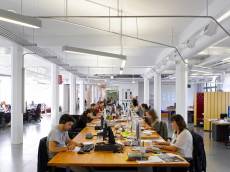June 6, 2013
Workplace wellness initiatives improve job morale, satisfaction and performance
It emerged this week that workplace wellness programs may not be as effective as previously thought in creating a healthier workforce and, of particular relevance for US firms, reducing health-care costs, but another US study paints a more positive picture. While concurring that determining the bottom-line impact of wellness programs continues to be a challenge for employers, this latest study does find a strong link between the wellness and vitality of an organisation and the health and wellness of its employees, which impacts directly on employees’ increased job morale, satisfaction, commitment and performance. The survey of approximately 1,300 businesses and 10,000 employees conducted by Virgin HealthMiles, Inc. found that workers also place a premium on the culture of wellness with 87 per cent claiming that health and wellness initiatives play a role in determining their employer of choice. (more…)























May 23, 2013
Guidance on designing in accessibility for disabled workers
by Pam Loch • Comment, Facilities management, Knowledge, Legal news, Workplace design
The government launches a campaign today using TV celebrities and disabled groups to help promote positive role models for disabled people. It’s aimed at building on the latest stats that show 81 per cent of people thought the Paralympics had a positive impact on the way disabled people are perceived. Currently they’re not well represented in the workplace, as according to DTI figures half of all disabled people are unable to find work. This is why the Equality Act 2010 plays such a vital role in promoting diversity in the workplace. Put into practice, understanding and adhering to the Equality Act 2010 requires employers to take positive action to remove certain disadvantages to disabled people posed by working practices and the physical features of premises. (more…)